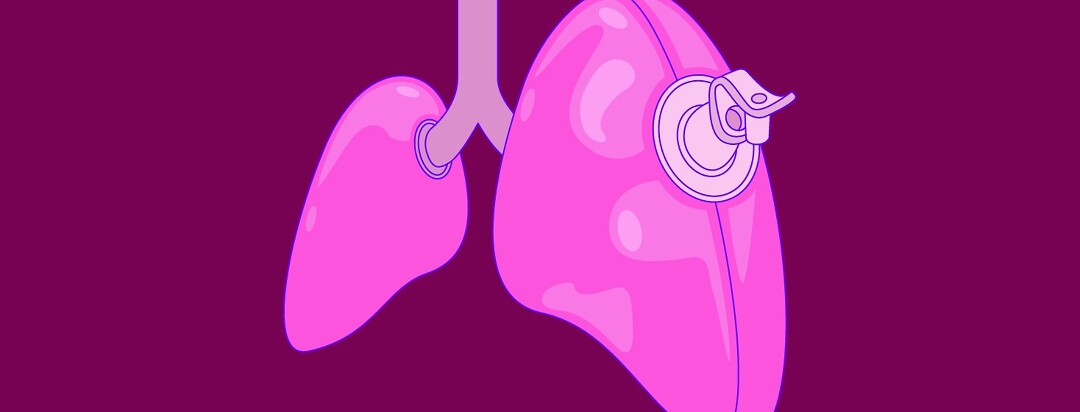Lung Hyperinflation in COPD
Lung hyperinflation happens when air gets trapped in the lungs. It is sometimes called “long lungs.” The trapped air causes the lungs to inflate more than they should. People with chronic obstructive pulmonary disorder (COPD) often show signs of hyperinflated lungs.1,2 Understanding this condition can help you spot the signs and improve your symptoms.
What is lung hyperinflation?
If someone cannot breathe out all of the air that they take into their lungs, the air becomes trapped. This causes the lungs to remain inflated, similar to a balloon. It also affects how much air the person can then take in. This leads to the shortness of breath experienced by those with COPD.1,2 Hyperinflation of the lungs can cause complications on top of the normal symptoms of COPD.1,2
How do lungs become hyperinflated?
Hyperinflation happens when the lungs lose some of their elasticity, or stretchiness. Since the lungs cannot stretch as well, it is hard to fully exhale. This traps the leftover air in the lungs.1
When this happens during physical exercise, it is called dynamic hyperinflation. It can also happen when a person is at rest. This is called static hyperinflation. People with COPD can experience both types of hyperinflation.1
How can I tell if I have hyperinflated lungs?
The symptoms of hyperinflated lungs are similar to the general symptoms of COPD. People with hyperinflated lungs may have:3
- Trouble breathing or shortness of breath
- Overall muscle weakness
- Fatigue and tiredness
- Heart problems
Your doctor can do a physical exam and will likely take a chest X-ray to determine if you have hyperinflated lungs. It may also be found during certain respiratory and air volume tests.3
How can I treat hyperinflated lungs?
Although there is not a cure for hyperinflated lungs, there are some ways to help lessen the symptoms. There are also ways to improve how your lungs are working:1,2,4,5
- Exercise with pursed-lip breathing – Both exercise and pursed-lip breathing can help people with COPD improve lung function. Start small with easy exercises, such as walking. When you exercise, try to use pursed-lip breathing. Breathe slowly. Inhale through your nose and exhale through pursed lips. Try to breathe in for 2 seconds and breathe out for 4 seconds.
- Bronchodilators – Your doctor may prescribe a bronchodilator to help you to breathe more easily and increase lung volume. This type of medication relaxes the muscles in your airway, helping your lungs to work more efficiently. This treatment can help with both static and dynamic hyperinflation.
- Surgery – In lung volume reduction surgery, the doctor removes part of the lung that is damaged. This gives healthy lung tissue room to grow and may help reduce hyperinflation and improve your breathing.
How do hyperinflated lungs affect my COPD?
Hyperinflated lungs can affect your COPD in several ways. When people with COPD get short of breath while exercising, it can cause them to not want to exercise. This can lead to a worse quality of life and even weight gain. These can both make COPD and hyperinflated lungs worse.5,6
Hyperinflated lungs and decreased exercise can also lead to various heart problems. Hyperinflation of the lungs has been linked to worse outcomes in general for people with COPD.5,6 If you have signs of hyperinflated lungs, talk to your doctor. They can do tests and come up with a plan to improve your symptoms.
Do you have a story to share about hyperinflated lungs? Click the button below to get started!

Join the conversation